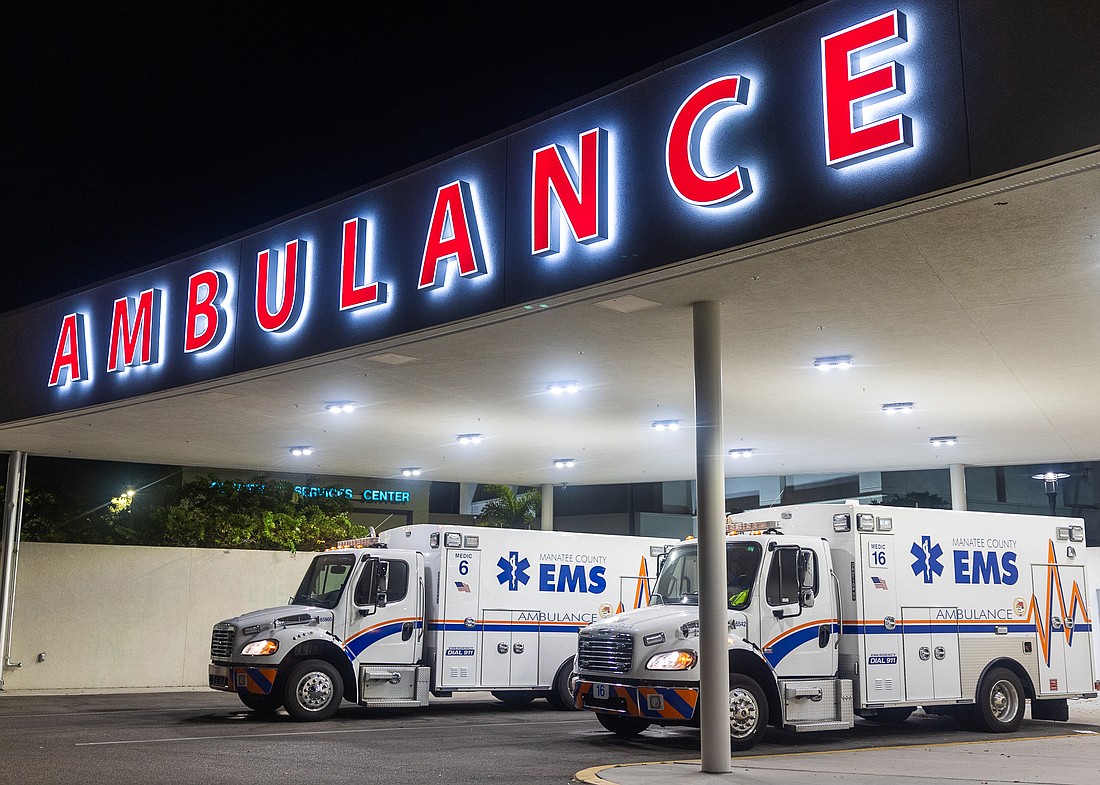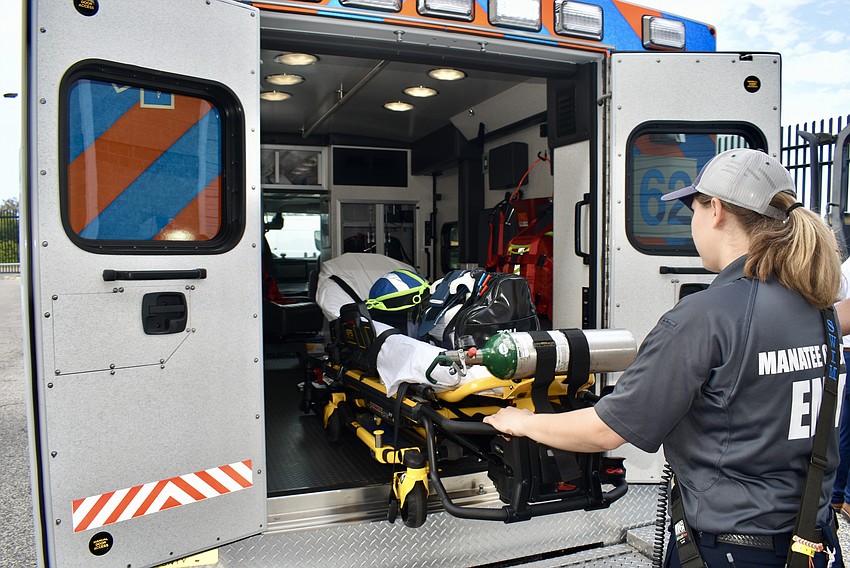- July 26, 2024
-
-
Loading

Loading

So those who use the county's emergency medical services might not know the answer to an important question. If you need an ambulance ride from a county ambulance, is that covered by your taxes?
The answer is no, not entirely.
Taxes pay for many of the services provided by the government, but Manatee County EMS services come with an itemized bill as well.
While EMS receives a portion of property taxes to operate, it’s not enough to cover all the department's expenses. So whether you call 911 from home or someone else calls from the scene of a car accident, you will receive a bill in the mail.
However, not all emergency services do cost more than you taxes cover. For instance, if your house burns down, property taxes do cover fire rescue services.
“There are some user fees associated with fire prevention,” said Paul Wren, the deputy chief of East Manatee Fire Rescue. “We’re different from EMS in that we don’t have a fee schedule that gets followed.”
Fire prevention fees include permits and plan reviews. If a fire is deemed to be arson or a homeowner ignored violation notices, then fire rescue can look to recover its costs. Otherwise, property taxes cover those expenses.
But if EMS personnel have to administer medical care when answering a call, it is likely you will get a bill.
“Medical billing is complex and can vary depending on several factors, such as location and type of services provided,” EMS Chief James Crutchfield said. “For automotive accidents, auto insurance, if available, is typically billed.”
On Feb. 13, commissioners approved a write-off of $3.1 million for unpaid EMS services for fiscal year 2023, which is a substantial drop from FY 2022 when more than $5.3 million was written off. Uninsured and underinsured citizens accounted for 66% of the unpaid bills.

Unpaid EMS bills work the same as any other unpaid bill. The bill is sent to a collection agency, which tries to collect from the responsible party. Out of the $3.1 million that went unpaid, only $52,589.47 has been recovered.
On the other hand, $16.2 million was collected from insurance and citizens in FY 2023. EMS typically responds to about 59,000 calls a year. About 35,000 of those calls require transport by ambulance.
The fees depend on the services required. As with anything else, the more services received, the higher the final bill will be.
For example, advanced life support is split between two categories: Level 1 and Level 2. Level 1 costs $600, and Level 2 costs $700. Crutchfield explained the difference.
Level 1 provides at least one intervention with medically necessary supplies and services. Level 2 provides at least three separate intravenous administrations of one or more medications and at least one of the following procedures: Manual defibrillation, endotracheal intubation, central venous and intraosseous line placements, a surgical airway, cardiac pacing or chest decompression.
There’s also specialty care, which costs $800 and requires advanced life support and specialized medical monitoring.
Ambulance services work like a ride share in that the cost lowers if more than one patient is being transported. In addition to the flat rate for transport, $10 per “loaded mile” is charged. If two people leave the scene of an accident in one ambulance, each pays $5 for every mile the ambulance has to drive to get to the nearest hospital.
A loaded mile works like a taxi meter. It’s only turned on when the passenger gets inside the vehicle.
Costs lower for the flat fee transportation charges, too. If two patients are transported together, instead of paying 100% of the fee, each person pays 75%. Three or more people pay 60%, and the mileage is divided by the number of patients on board.
But just because a patient isn’t transported doesn’t mean they won’t receive a bill. If advanced life support services are rendered, a flat fee is charged whether the patient is transported to the hospital or not. Each level costs $100 less than when a transport is needed. Level 1 costs $500, and Level 2 costs $600.